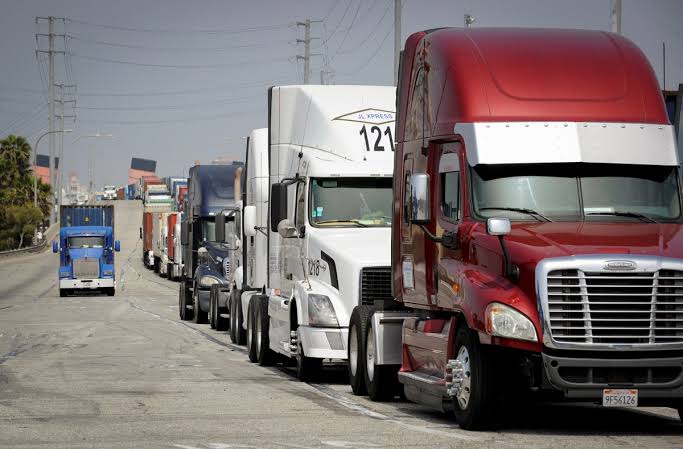As the first of a series of actions planned to cut vehicle pollution, the U.S. Environmental Protection Agency on Tuesday finalized new emissions standards to drastically cut smog- and soot-forming emissions from heavy-duty trucks and EPA officials hope the new standards will omit smog and soot-forming emissions from heavy-duty trucks and protect public health.
The new rules from the Environmental Protection Agency are the first update to clean air standards for heavy-duty vehicles in more than 20 years and are 80% more stringent than current standard.
By 2045, the new standards will result in a 48% reduction in nitrogen oxide, a 28% reduction in benzene, a 23% reduction in volatile organic compounds and an 18% reduction in carbon monoxide. All of these emissions can cause health problems for people.
The rules will also help fight climate change, even though they aren’t likely to have any effect on carbon dioxide emissions. Nitrogen oxide is roughly 300 times as potent as carbon dioxide at warming the atmosphere and accounts for about 7% of all U.S. greenhouse gas emissions from human activity, according to the EPA.
Read also: 88% of Africans believe climate change is already affecting their everyday life
The new rules targeted at heavy-duty truck and engine manufacturers by tightening yearly emissions limits and changing key provisions of existing emissions rules to ensure emissions reductions in long-term road use would result ultimately result to 2,900 annual fewer premature deaths, 1.1 million fewer lost school days for children, 6,700 fewer hospital admissions and emergency department visits, 18,000 fewer cases of childhood asthma and $29 billion in annual net benefits.
They would impact test procedures, regulatory useful life requirements and emission-related warranties, among other requirements.
“It’s really important, especially for protecting the health of the 72 million people living near truck freight routes in America,” EPA Administrator Michael Regan was quoted to have said in an interview, adding the rule will result in an up to 48% reduction in smog-forming nitrogen oxide (NOx) emissions by 2045.
American Lung Association President Harold Wimmer praised the rule, saying it “sets the stage for EPA to issue the next round of stronger standards to clean up trucks in 2023,” albeit they represent a small fraction of total on-road vehicles but generate the greatest share of harmful air pollutants, including dangerous nitrogen oxides.
Separately, the EPA plans to propose by March “Phase 3” greenhouse gas (GHG) standards for heavy-duty vehicles beginning and new emissions standards light- and medium-duty vehicles. Both of those rules when finalized are to take effect starting in the 2027 model year.
In December 2021, the EPA finalized new passenger vehicle emissions requirements through 2026 that reversed President Donald Trump’s rollback of car pollution cuts.
The EPA expects to make decisions on waiver requests by California to set its own heavy truck emissions rules early next year.
EPA opted not to finalize the heavy-duty truck GHG emissions rules in 2022 after Congress passed new incentives to speed the adoption of zero-emission vehicle.
EPA believes much greater zero-emission heavy duty vehicle adoption rates are possible given the climate law’s $40,000 Qualified Commercial Clean Vehicle tax credit.
Transportation is the largest source of U.S. GHG emissions, making up 29% of emissions, and heavy-duty vehicles are the second-largest contributor, at 23%.
Story was adapted from Reuters.
